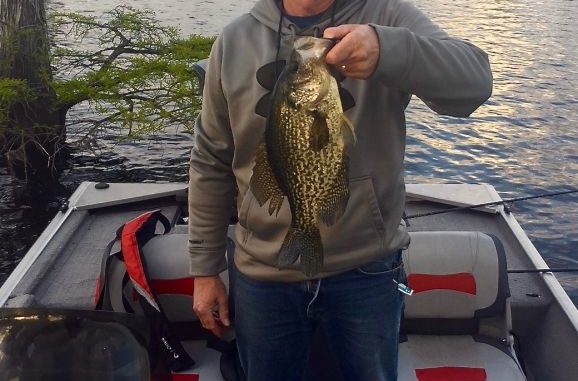
Target structure in deeper water
A few years back, the only time Randy Smith ever caught a crappie was by accident.
Now, he dedicates most of his time on the water chasing them.
“I’ve been bass fishing since I was 16, but now I fish mostly for white perch,” Smith said. “One of the main reasons I converted is Black Bayou Lake north of Monroe. It’s an incredible white perch lake. The thing that is unique about it is that you hardly ever catch small fish. It’s amazingly consistent.”
The 5,300-acre lake is part of the Black Bayou National Wildlife Refuge operated by the U.S. Fish and Wildlife Service. Make sure you know all the regulations before entering the refuge or the lake. One example is the 50-horsepower outboard maximum allowed there.
“Late May through June and July, the fish will be moving back into a little deeper water, but they will still be around the same type of structure. That’s trees and grass,” he said. “Because the lake is literally full of them both.”
But getting a jig down into the crappie’s feeding zone isn’t always easy. Some people actually poke holes in the grass and then fish them. Smith doesn’t do that, but he is constantly looking for holes to drop his jig through.
He also explained that Black Bayou is basically a flat lake, so when fish move into deeper water there, it isn’t much of a transition. It’s usually from 5 feet to about 8 feet of water.
“It isn’t easy fishing,” he said. “But it is productive. The key this time of year is to find what depth they are in and stick to structure in that depth range.
“The lake all basically looks alike. You won’t find them in the shallower trees this time of year. You will start to find them in the lily pads, too. The key is finding pads in the deeper water.”
Hair jigs are the lake favorite, and color selection at Black Bayou is fairly simple.
“What most people here will tell you is to fish black and chartreuse. And if you don’t fish that, then fish black and chartreuse,” he chuckled. “Any questions?”
Smith noted that sometimes jighead colors make a difference. Black is the “go-to” color, but some days an orange head or red head will make a world of difference. He also fishes a little gray hair jig late in the day, and also uses plastics like blue thunder or electric chicken.
The other most important thing for fishermen is to determine what presentation the fish want. Most of the time, it’s a straight vertical jig presentation with little movement. But there are days when they won’t touch it unless you swim it.
“The only way to find that out is to spend some time on the water,” he said. “And at Black Bayou, it’s worth every second of it.”


